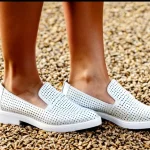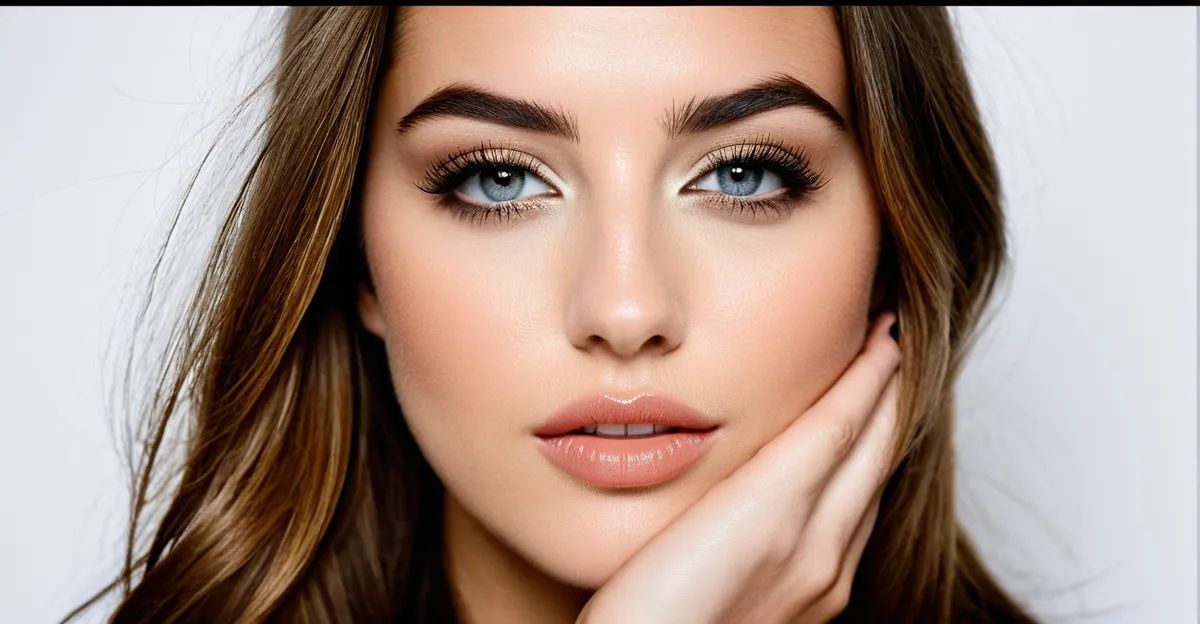How UK Women’s Fashion Evolves Over the Years: A Journey Through Time
The Historical Roots of UK Women’s Fashion
UK women’s fashion has a rich and diverse history, spanning centuries and reflecting the social, economic, and cultural changes of the time. To understand the evolution of women’s fashion in the UK, it’s essential to delve into its historical roots.
Victorian Fashion (1837-1901)
During the Victorian era, women’s fashion was characterized by strict social norms and elaborate clothing. The silhouette was defined by a tight corset, a full skirt, and layers of petticoats. Fabrics such as silk, velvet, and lace were popular, and the use of intricate embroidery and beading was common.
Also to see : What Are the Emerging Footwear Trends in UK Women’s Fashion?
"The Victorian woman was expected to be a paragon of virtue and modesty, and her clothing reflected this," says Dr. Valerie Cumming, a fashion historian at the Victoria and Albert Museum in London. "The restrictive nature of the clothing was a physical manifestation of the societal constraints placed on women."
The Early 20th Century: Liberation and Change
The early 20th century marked a significant turning point in women’s fashion, particularly with the onset of World War I.
World War I and the Roaring Twenties
During World War I, women took on new roles in the workforce, leading to a shift towards more practical and liberated clothing. The 1920s saw the rise of the flapper style, characterized by shorter hemlines, looser fits, and a more boyish silhouette.
Topic to read : How Can UK Women Incorporate Sustainable Fashion Choices into Their Wardrobe?
"The flapper era was a time of great freedom for women," notes fashion historian, Caroline Rennolds Milbank. "Women were finally able to shed the restrictive clothing of the past and embrace a more modern, independent lifestyle."
Mid-Century Modern: The 1940s to the 1960s
The mid-20th century saw continued evolution in women’s fashion, influenced by wartime austerity and post-war prosperity.
Wartime Austerity (1940s)
During World War II, clothing was subject to strict rationing and utility clothing became the norm. The “Make Do and Mend” campaign encouraged women to repair and reuse their clothes.
The New Look and Youthquake (1950s-1960s)
The 1950s introduced Christian Dior’s iconic “New Look,” which emphasized femininity with narrow waists and full skirts. The 1960s saw the rise of youth culture, with mod styles and mini dresses becoming popular.
| Decade | Key Trends | Influential Designers | Notable Fabrics |
|---------|------------------------------------|------------------------------|--------------------------|
| 1940s | Utility clothing, rationing | Norman Norell | Cotton, wool |
| 1950s | New Look, femininity | Christian Dior | Silk, satin |
| 1960s | Mod styles, mini dresses | Mary Quant | Vinyl, PVC |
The Late 20th Century: Punk, Power Dressing, and Grunge
The late 20th century was marked by diverse and often rebellious fashion trends.
Punk and New Wave (1970s-1980s)
The punk movement, led by figures like Vivienne Westwood and Malcolm McLaren, rejected mainstream fashion with ripped clothes, safety pins, and bold graphics.
Power Dressing (1980s)
The 1980s saw the rise of power dressing, characterized by shoulder pads, tight skirts, and bold accessories. Designers like Donna Karan and Giorgio Armani dominated this era.
Grunge and Minimalism (1990s)
The 1990s were defined by grunge and minimalism, with flannel shirts, high-waisted jeans, and simple, understated designs. Brands like Gap and Calvin Klein were popular during this period.
- **Punk:**
- Ripped clothes
- Safety pins
- Bold graphics
- Vivienne Westwood
- **Power Dressing:**
- Shoulder pads
- Tight skirts
- Bold accessories
- Donna Karan
- Giorgio Armani
- **Grunge:**
- Flannel shirts
- High-waisted jeans
- Simple designs
- Gap
- Calvin Klein
The 21st Century: Globalization, Sustainability, and Digital Influence
In the 21st century, UK women’s fashion has been shaped by globalization, sustainability concerns, and the rise of digital media.
Globalization and Fast Fashion
The early 2000s saw the rise of fast fashion, with brands like H&M, Zara, and Primark offering trendy clothes at affordable prices. This has led to a highly consumerist culture but also raised concerns about sustainability and ethical production.
Sustainability and Ethical Fashion
In recent years, there has been a growing focus on sustainable and ethical fashion. Brands like Patagonia and Stella McCartney have led the way in using eco-friendly materials and fair labor practices.
Digital Influence and Social Media
Social media platforms like Instagram and TikTok have revolutionized the fashion industry. Influencers and celebrities now play a significant role in shaping fashion trends, and online shopping has become the norm.
"Social media has democratized fashion," says fashion influencer, Camille Charrière. "It allows young women to see and engage with fashion in a way that was previously inaccessible."
Contemporary Trends and Future Directions
As we look to the future, several trends are shaping the UK women’s fashion industry.
Diversity and Inclusivity
There is a growing emphasis on diversity and inclusivity, with brands catering to a broader range of body types, ages, and ethnicities.
Technology and Innovation
Technology is also playing a crucial role, from 3D printing to virtual try-ons. This is set to revolutionize the way clothes are designed, produced, and consumed.
Sustainable Fashion
Sustainability remains a key focus, with many brands committing to reduce their environmental impact through the use of recycled materials, reduced waste, and circular business models.
| Trend | Key Features | Examples |
|--------------------|--------------------------------------|----------------------------------|
| Diversity and Inclusivity | Catering to diverse body types, ages, ethnicities | Fenty by Rihanna, ASOS Curve |
| Technology and Innovation | 3D printing, virtual try-ons | Iris van Herpen, Farfetch |
| Sustainable Fashion | Recycled materials, reduced waste, circular business models | Patagonia, Stella McCartney |
Practical Insights and Actionable Advice
For those interested in staying ahead of the curve in UK women’s fashion, here are some practical insights and actionable advice:
- Stay Informed: Follow fashion blogs, influencers, and industry leaders to stay updated on the latest trends.
- Invest in Quality: While fast fashion can be tempting, investing in high-quality, sustainable pieces can be more cost-effective and environmentally friendly in the long run.
- Experiment with Styles: Don’t be afraid to try out different styles and trends to find what works best for you.
- Support Ethical Brands: Look for brands that prioritize sustainability and ethical production practices.
"The key to great fashion is not just about following trends, but about finding what makes you feel confident and comfortable," advises fashion stylist, Alexandra Wilkis Wilson.
UK women’s fashion is a dynamic and ever-evolving field, influenced by historical, social, and cultural factors. From the restrictive clothing of the Victorian era to the modern focus on sustainability and digital influence, each decade has brought its unique style and trends. As we move forward, it’s clear that the future of fashion will be shaped by technology, diversity, and a growing commitment to sustainability. Whether you’re a fashion enthusiast or just someone who loves clothes, understanding the evolution of UK women’s fashion can help you appreciate the art and culture behind every dress, every piece of clothing, and every style.





